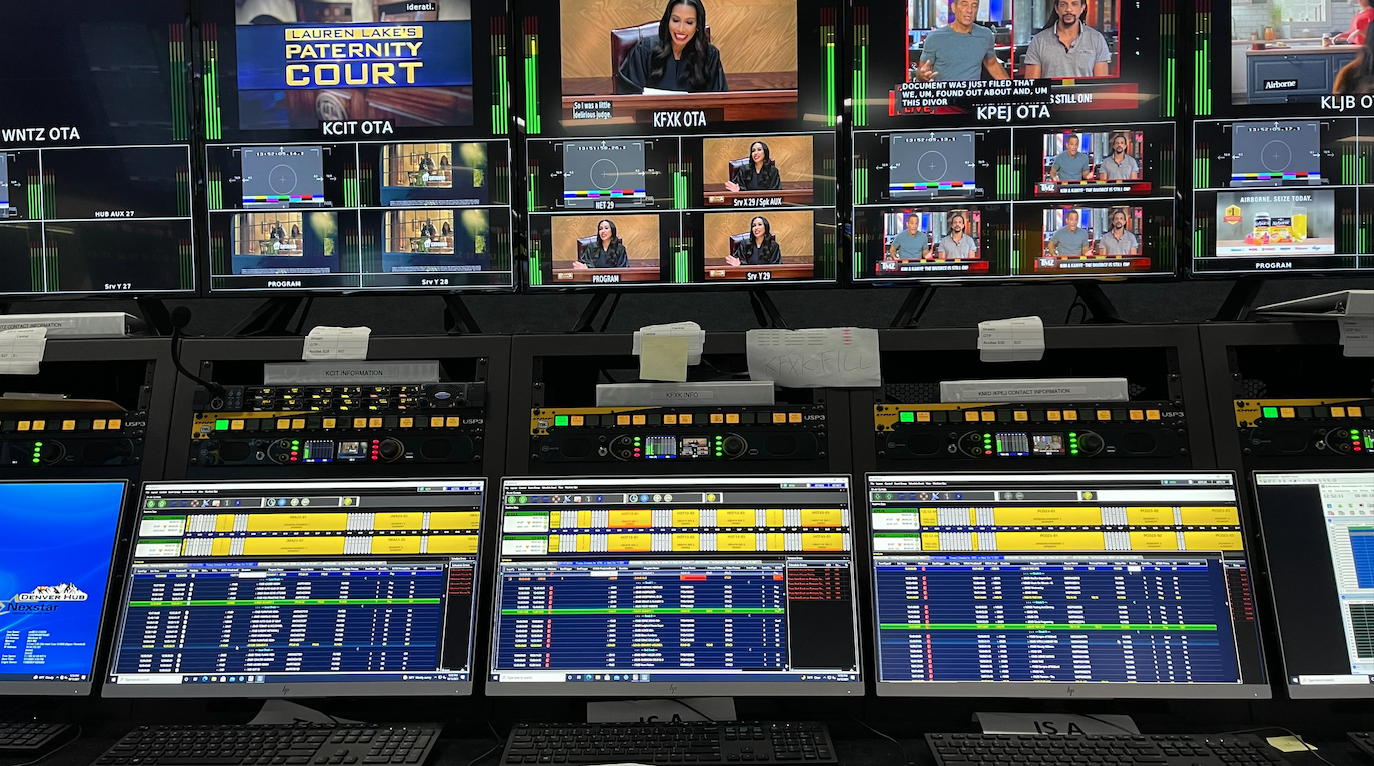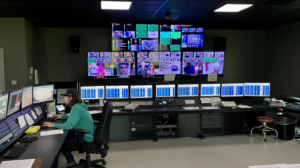
The cloud and master control — a measured migration

The flexibility and scalability of public cloud technology holds great potential for broadcasters. Some networks and station groups have already moved key pieces of their operations there including content prep, archiving and even playout as they look to decrease their reliance on on-premise hardware. However, the cloud doesn’t make economic sense today for every broadcast workflow. And many local broadcasters with legacy hardware infrastructures might be better served by taking a gradual, phased-in approach to adopting cloud technology than immediately diving in.
That is particularly true in master control operations, where individual stations and larger groups can achieve cost savings and new efficiencies simply by employing proven centralization, or “hubbing,” techniques with the latest hardware and software options.
Centralization certainly isn’t new. Some large station groups streamlined their master control workflows ago over a decade ago by consolidating playout and traffic functions, either in dedicated network operations centers or in one or more individual stations that served as a “hub.” These moves allowed them to use the same centralized hardware and personnel to support multiple channels, reducing both technology investment and labor costs.
Today, many of the same groups are looking at the cloud as the next step in their master control evolution, and some are already using the cloud to playout new diginets or OTT (over-the-top) channels. But centralization based on a more traditional on-premise model still has merit for their legacy linear businesses, as well as for other groups that haven’t yet made any moves to consolidate master control. That is particularly true given the vastly improved capabilities of common-off-the-shelf (COTS) hardware used in on-premise solutions, says Shawn Maynard, SVP and GM of leading automation vendor Florical Systems.

A task that required purpose-built hardware a decade ago can now be easily performed by commodity hardware
The big improvements in COTS hardware were driven by a number of different verticals including finance, medical and government customers who presented server manufacturers like HP and Lenovo with their own specific demands. Broadcasters are now reaping the benefits of all that development work, as a task in a broadcast facility that required purpose-built hardware a decade ago can now be easily performed by commodity hardware.
“While centralization has been a topic of the past, it certainly is not a dead topic,” says Maynard. “I think as technology has moved forward, the capabilities for centralization, and the cost-effective ways of being able to do that, have actually grown.”
Florical has been supplying master control solutions to the television industry for over 35 years, and its customers include high profile cable networks, network owned-and-operated stations, individual network affiliates and PBS stations. Its products include off-the-shelf “station-in-a-box” video server technology, remote access of system control, automated reports for traffic and management and unique applications for centralizing operations and centrally managing content.
Maynard says the question today for broadcasters isn’t if they should centralize, but when.
“It makes just as much sense for a small group of small-market stations to start thinking about this as it does for a large group, where there are greater economies of scale,” he says Maynard.
The low-hanging fruit when looking to improve master control operations across a station group is in streamlining the distribution of assets. The goal is to minimize redundant workflows that are occurring across individual stations by creating a touch-once and distribute-to-many model. Florical has already successfully created such a centralized ingest/distribution system for Nexstar Media Group, and is in discussions with another large group about organizing their ingest functions in a similar manner.
With cybersecurity top of mind among broadcasters after several high-profile ransomware attacks in the past two years, Florical has partnered with file transport specialist Signiant to provide fast and secure movement of content such as commercials and syndicated programming over the public internet. Security is key to centralization efforts among Florical’s customers.
“We’re providing a very secure environment in which to manage the asset along with the metadata, such as the timing data for syndicated programming, and marry that at the local site and not introduce any security threats,” says Maynard. “We can manage the flow of what ports are open and which direction they go to be able to protect the organization with the delivery of that content.”
The Master-Control Decision Matrix
Regardless of the underlying technology being used, master control has three main areas: content acquisition; content management; and content presentation, or “playout.” But not all playout is the same, and those differences in playout requirements can determine whether or not public cloud technology is an appropriate replacement for legacy on-premise hardware.
A cable network like a round-the-clock movie channel with non-dynamic interstitials is relatively simple to playout from the cloud. But a local broadcast station with live news cut-ins and a dynamic advertising schedule can be very complex. Public cloud technology and network latency are advancing to the point where the timing of local news break-ins can be coordinated with cloud playout, but there is still work to do.
“There are definitely some challenges,” says Maynard. “The timing of local cut-ins, those things are a real factor when dealing with more interactive, dynamic channels. Do you have to do breaking news? Can you do that reliably, does it look good, and does it reach the right time in a cloud environment? Is there enough history of stability in that model to justify it? I don’t think we’re there yet. I think we’re close, but I don’t think we start experimenting with our cash register just yet.”
On that note, Florical’s best-selling product today is its Acuitas integrated playout system, which is typically being bought to replace aging Harmonic, Imagine and Grass Valley servers in an on-premise environment. The “channel-in-a-box” product, based on an HP server platform and Matrox video cards, combines Florical’s AirBoss automation software with a bevy of features including graphics, switching and up-,down and cross-conversion. It supports a variety of codecs and video formats including 1080p HDR and 4K, making it ready for future ATSC 3.0 applications.
Florical has helped station groups centralize master-control operations with Acuitas in several different ways. Groups with good connectivity to all of their individual stations might deploy a “streaming” model, where all of the content is played out from hardware at the hub and distributed via IP to the stations for over-the-air broadcast. If connectivity to the stations is not reliable or is cost-prohibitive, a group might instead prefer to rely on an Acuitas server at each station to perform playout while still managing and controlling the playlist from the hub. Other large groups have employed a mixture of both models, sometimes in conjunction with multiple regional hubs where master control operators monitor both streaming and remotely controlled playout from the same set of screens.
“We’ve done hubbing or centralization probably three or four different ways,” says Maynard. “There is not one way to hub master control.”
Explore your options for robust, end-to-end master control automation and playout solutions.
































Comments (0)